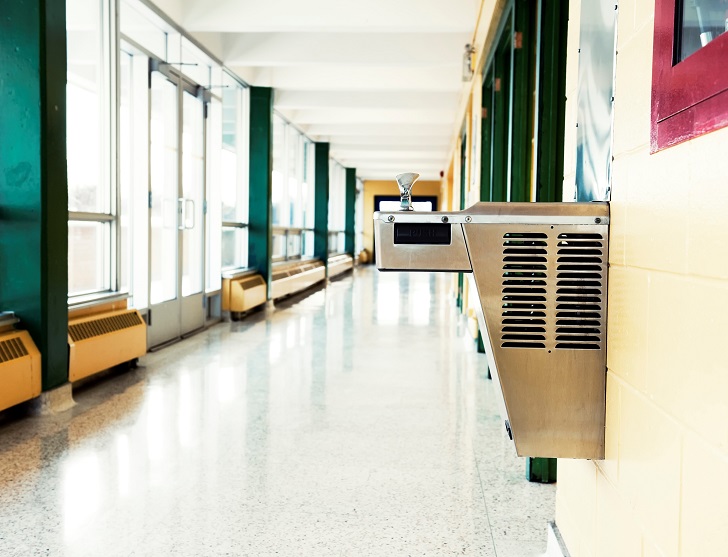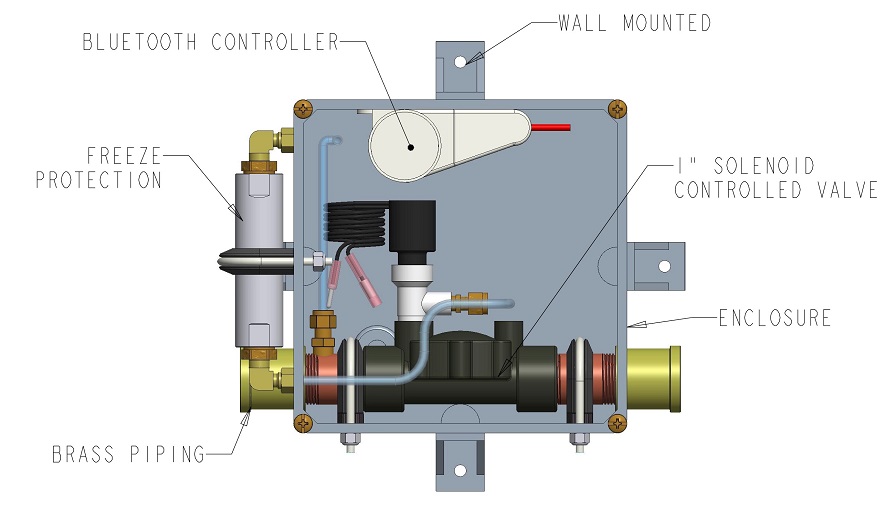

Protecting the integrity of water lines and preventing stagnation is critical, particularly as public areas and manufacturing plants have experienced reduced or interrupted water usage during the pandemic. Harold Mosley, from Mueller Water Products, explains how the Hydro-Guard Industrial Flushing System can help.
As many public areas remain closed due to Covid-19 protocols, drinking water in the pipes of these buildings can stagnate. Stagnant water leads to a loss of chlorine and a build-up of sediment resulting in bacterial growth and ageing of water that can also affect the taste, smell and colour of the water. There is also the possibility that there may be biofilm growth in water lines. These common conditions can lead to waterborne illness and should be addressed before these areas can reopen.
Many manufacturing facilities are also operating with reduced staff size due to Covid-19 restrictions, also giving cause for concern about stagnating water. Industrial sites are often equipped with plumbed eye wash stations and safety showers for the protection of their employees. When an accident happens and an employee gets harmful chemicals in her or his eyes, it is critical that they flush their eyes immediately with clean water that is free of rust and other compounds that naturally leach into stagnant water.
Automatic flushing One solution to reduce the risk of waterborne illnesses, which is quick and simple to install and will protect facilities in the long term, is an automatic one such as the Hydro-Guard Industrial Flushing System. This ensures water is pushed through the system at a sufficiently high velocity to eliminate stagnant water.
Industrial units are designed specifically for small-sized water lines and can be installed both indoor and out of doors. They can be used to deliver tepid water-to-eye wash or safety shower stations, or to deliver cooler water to temperature sensitive applications in a manufacturing plant.
These units can be set to flush automatically which reduces operational costs by using less water to flush the lines more frequently, bringing a higher degree of consistency to the flushing effort. Flushing can occur without the need to manually operate taps, valves or outside taps for hoses, ensuring flushing occurs when it is best for the facility, not just when staff have time to do it. With reduced water usage and operational efficiencies, these devices can give a return on investment within one year.
System monitoring Most utilities have flushing programmes to ensure safe drinking water for their customers. It’s up to building owners and school officials to have processes in place that ensure water entering their plumbing systems maintains the highest degree of water quality.
Even these small industrial flushing units can be upgraded to have more advanced system monitoring and management, such as those used by utility companies. A smart water quality monitoring system will trigger flush events when pre-set levels of chlorine, temperature, pH, turbidity, flow and/or pressure are detected, which further reduces the involvement of untrained professionals and increases the protection of water quality.





